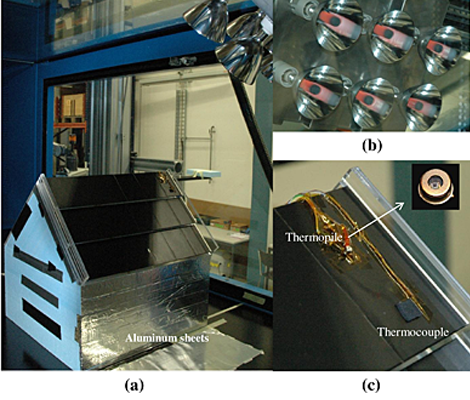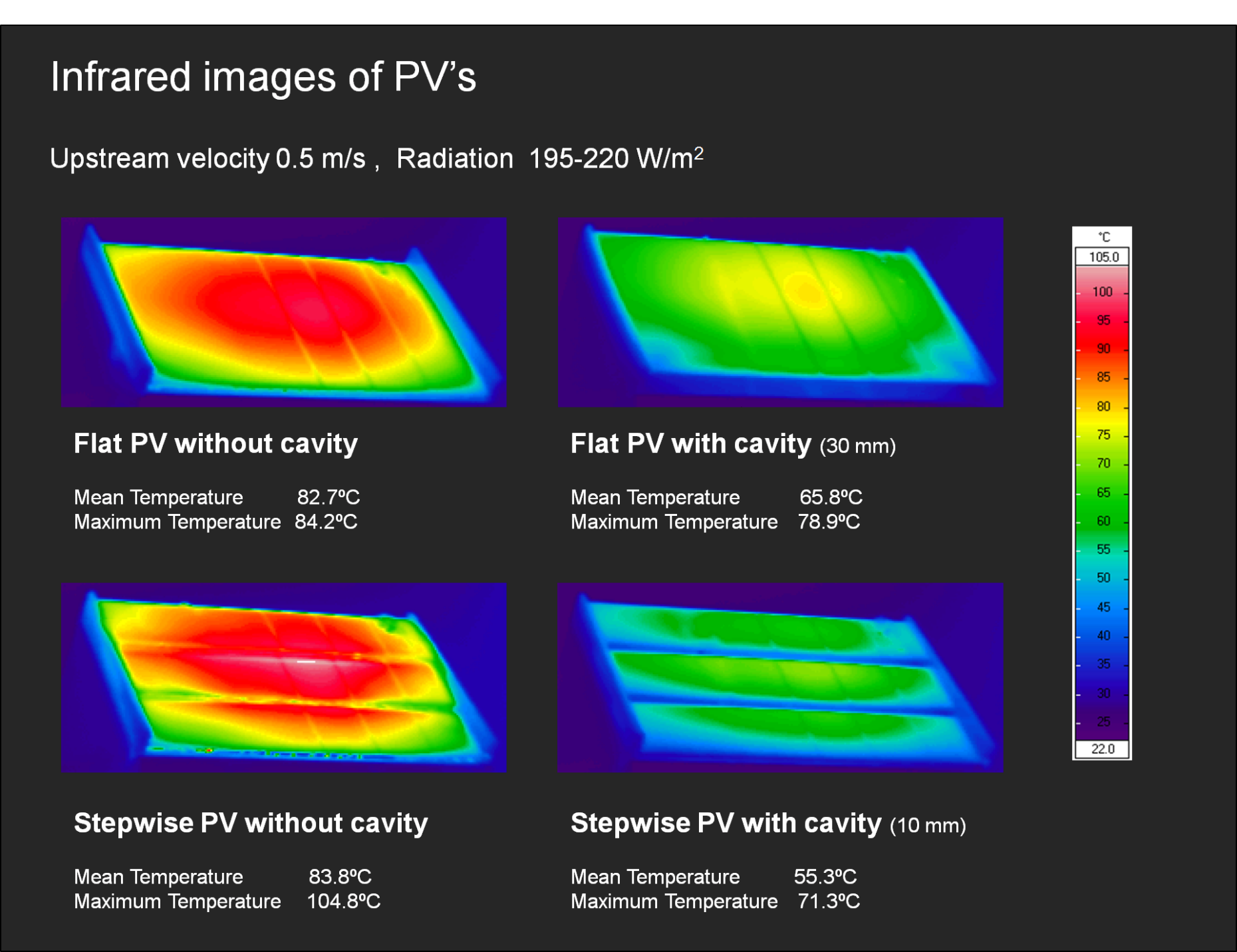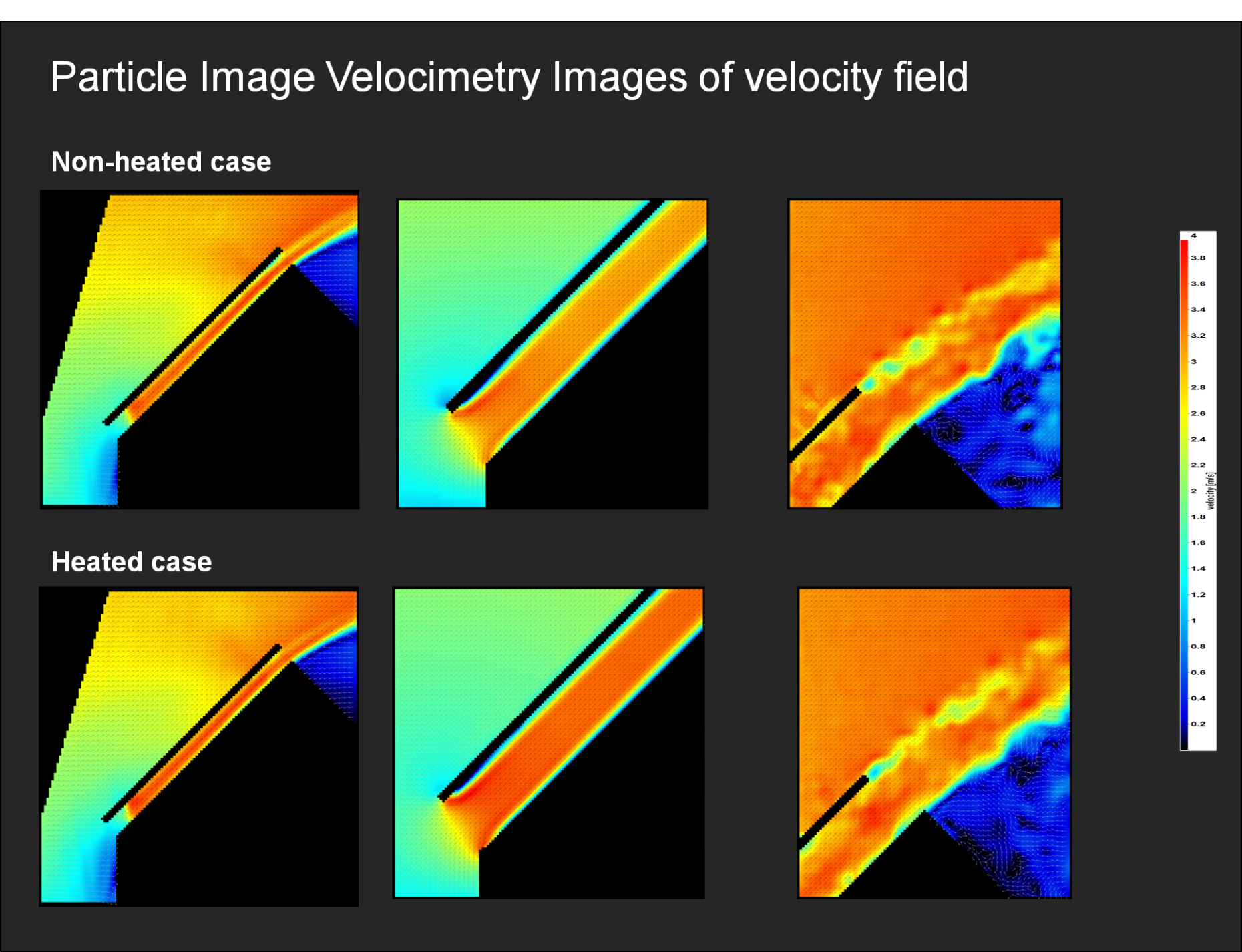Buoyant-forced cavity ventilation of BIPV: P. Mirzaei
In the postdoc of P. Mirzaei, we analyzed how buoyant-forced cavity ventilation may reduce the surface temperatures of building integrated Photovoltaics (BIPV) in order to increase their efficiency by reducing their surface temperatures.

The setup consists of a solar simulator and a building prototype with installed PV, placed inside an atmospheric wind tunnel to control upstream wind velocity. a) Building prototype, (b) infrared radiation source (solar simulator), and (c) surface thermopile and thermocouple. The measurement is repeated under various upstream velocities, radiation intensities, and cavity sizes and arrangements. Particle image velocimetry (PIV) and infra-red thermography were performed to simultaneously monitor the surface temperature and airflow above and below the panel.
Thermography is performed using an infrared camera to monitor the surface temperature of the BIPV. Higher ventilation can be achieved using stepped PV arrangements with an open cavity behind the modules compared with a flat arrangement.
Particle image velocimetry (PIV) was performed to monitor the airflow below the PV panel. The study clearly shows how accelerated airflow within the cavity increases the heat exchange between the PV and airflow and consequently reduces the PV temperature.

